In order to broaden the limits of their sovereignty, they did not shy away from even the most drastic measures. Castles and blood-drenched castles and states ... How did the first Piasts REALLY fought?
As always, all positions in the TOP10 ranking are based on the articles we publish. This time we decided to show the history of the expansion of Poland's borders by its first rulers. More information about Mieszko I can be found HERE and about Bolesław Chrobry HERE.
You wouldn't even suspect that the first Piasts ...
10. They appropriated a feather crown
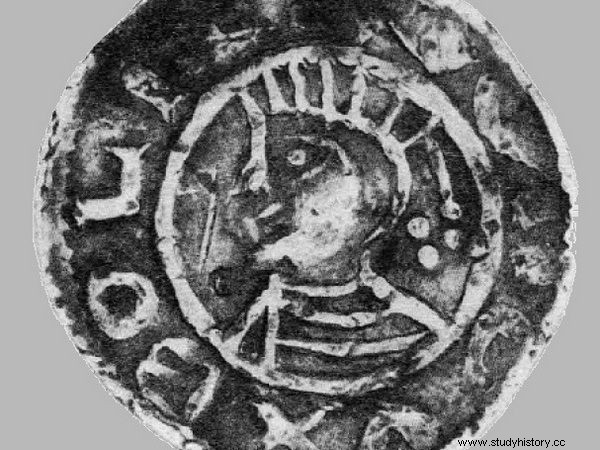
The image of Brave in a feathered crown, stamped on the denar.
The feathered crown, which can be seen on the denar of Bolesław Chrobry, was a symbol of power over Moravia. The coin with the image of the Polish prince was minted for propaganda purposes. Chrobry conquered this land probably in 1002, and later negotiated with the local elites to recognize him as their ruler. In the following years, "Moravian warriors of Bolesław" supported him in fights with the German king Henry II. Moravia remained within the borders of the Piast state probably until 1031 (read more about this).
9. They owed a lot to the permanent incorporation of Krakow
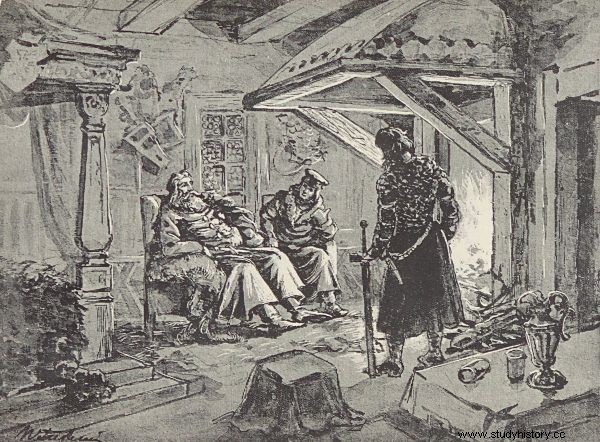
19th-century image of Bolesław the Brave, planning further conquests.
The conquest of Krakow was - looking from the perspective of a thousand years - one of the most enduring successes of the first Piasts. It took place between 985 and 1000, i.e. during the reign of Mieszko I or Bolesław the Brave. Already in March 1000, the bishop of Kraków was subordinated to the archbishop of Gniezno. It is believed that it was the conquest of the wealthy Krakow that allowed Brave to raise funds, thanks to which he could organize the Gniezno convention. And by the way enchant with the splendor of Emperor Otto III and his surroundings (read more about this).
8. They used trickery to push boundaries
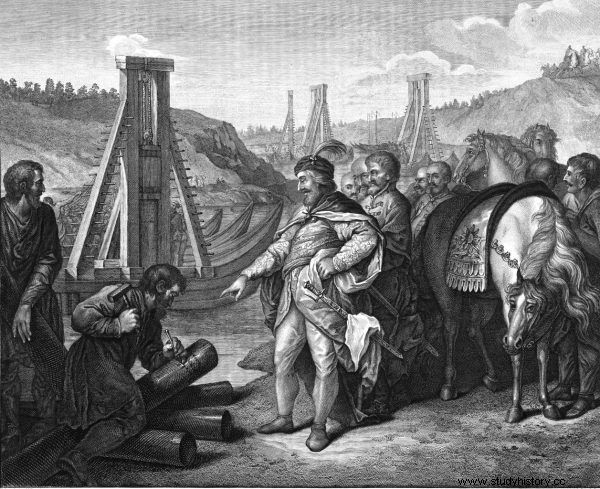
From the beginning of his rule, Chrobry led an aggressive expansion. Above, there is a 19th-century illustration showing the driving of border posts on the Soława River.
Bolesław Chrobry used to use stratagems worthy of Mr. Zagbaby from Sienkiewicz. In 1005, he bribed people who were to lead the German army through the area between the Elbe and the Oder. As a result, instead of the shortest route, King Henry II's warriors marched several days through swamps and wastelands. And the Polish ruler eagerly used this to defeat them and strengthen his power over the Oder (read more on this topic).
7. They used methods straight from the police state to keep the new lands in check
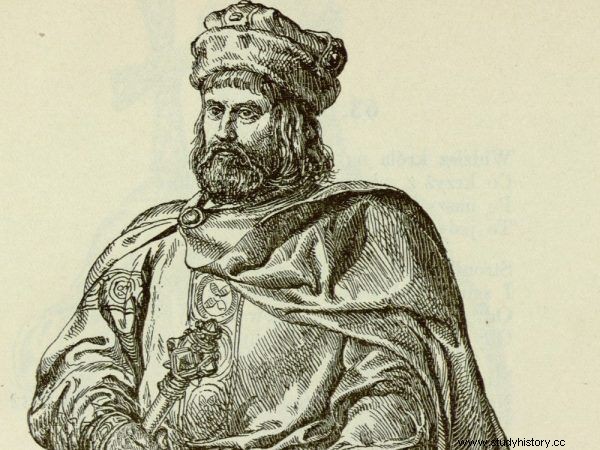
Prince Siemomysł in the nineteenth-century illustration from Józef Chociszewski's "National Reading".
The country that was formed during the reign of the semi-legendary Siemomysł and his son Mieszko I should be considered a police state, or even a military dictatorship . The troops subordinated to the prince kept their subjects in check, who had previously lived in small, isolated communities. The violent squad was a malevolent force, seen as an invader rather than an authority (read more on this).
6. Thanks to their intrigues, they won the Czech throne
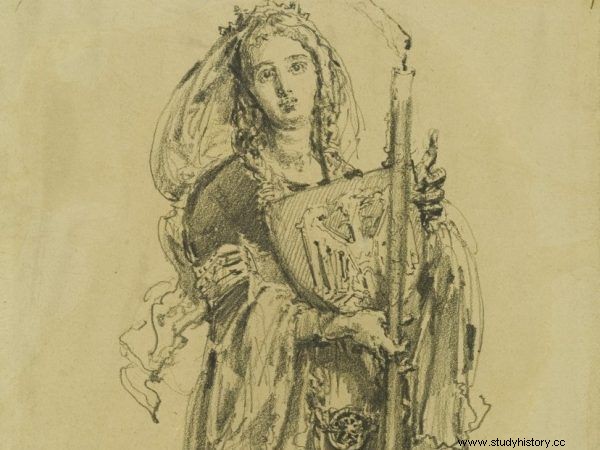
Bolesław the Brave, as the son of the Czech princess Dobrawa, believed that he had sufficient rights to the Prague throne. A drawing by Jan Matejko from 1886.
Bolesław Chrobry managed to bring two candidates to the Czech throne, who looked more like bombs with delayed ignition. First it was the alcoholic Władywoj, then the psychopath Bolesław III the Red. The Polish prince hoped to ignite the civil war in the south. And he was not wrong. The Czech magnates themselves asked him for help in the fight against Rudy. Chrobry invited his relative to Krakow for talks, and at night, after a sumptuous feast, he imprisoned him and blinded him. The next day he drove into Prague, whose inhabitants proclaimed him their ruler (read more about this).
5. Threats led to one of their greatest successes…
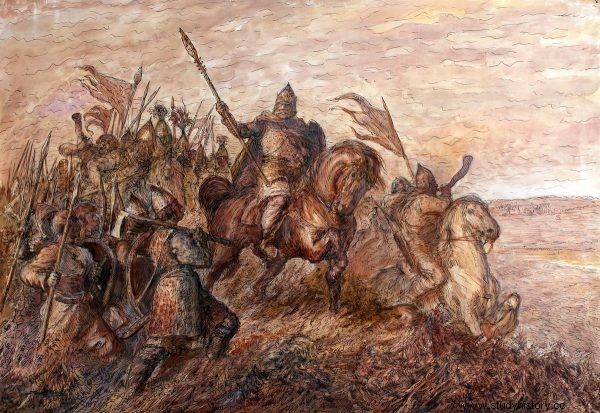
Bolesław Chrobry with the team during the expedition to Kyiv. Drawing by Karol Stobiecki.
On July 22, 1018, Bolesław's army, led to Kyiv, stood on the Bug River. From the opponents' camp across the river, insults against the Polish ruler were heard at night. Budy, the voivode of the Ruthenian prince Jarosław, even threatened: "I will pierce your fat belly with a javelin" . At these words, Brave climbed onto his steed and ran across the ford to avenge the insult. He was followed by warriors who massacred the surprised Ruthenians. Budy was killed, and three weeks later Bolesław entered Kiev (read more about this).
4. … And the comet
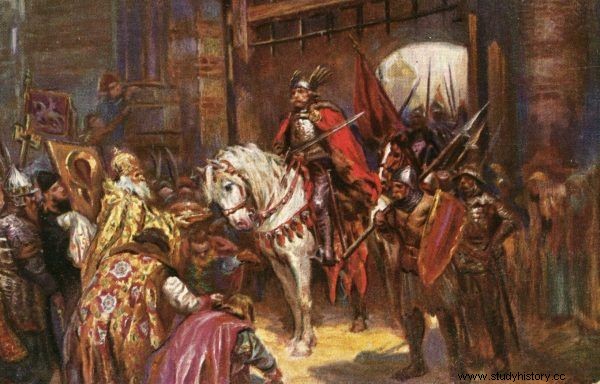
Bolesław Chrobry triumphantly enters Kiev. A painting by Konstanty Górski.
When the Polish prince Bolesław the Brave was heading towards Kiev, he followed the path marked out by the comet. He probably considered it a sign of favor from God himself. On August 13, 1018, its splendor was the greatest. It was then that Bolesław's army stood in the outskirts of Kiev. They most likely interpreted the "hairy star" as a harbinger of the success that awaited them the next day. Indeed, Brave achieved a triumph that even the emperors of Byzantium were not capable of (read more on this).
3. They murdered Nadobrzany
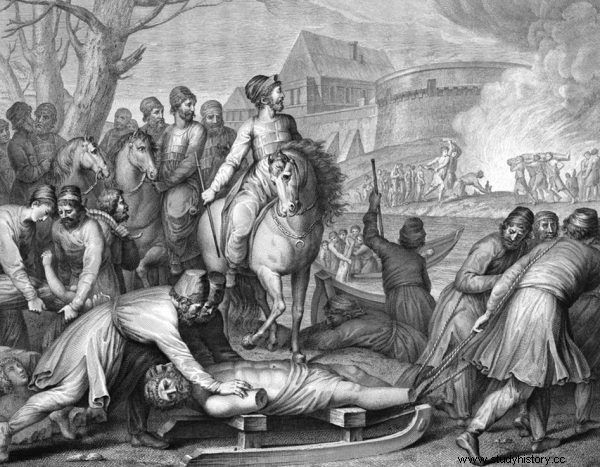
The Piasts had no mercy for their enemies.
The fact that the first Piasts aimed at success over the corpses is evidenced by the fact that the tribe living on the Obra River has only ruins . We do not know the name of a single ruler, not even their name has survived. Those Nadobrzanie (as they are conventionally referred to), who survived the slaughter, were resettled. As a slave labor, they worked on building new Piast castles in Poznań, Gniezno, Giecz or Bnina (read more about this).
2. They moved the capital to Prague
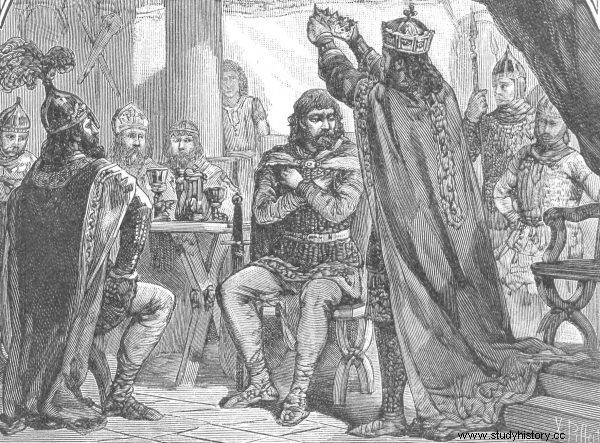
It was in Gniezno that Brave met the emperor in 1000. But a few years later, the position of this city as the capital was put into question. A fragment of an illustration by Ksawery Pillati, showing Otto III putting a crown on the temple of a Polish ruler, from the book "Images of Polish kings and princes".
Prague was a real metropolis in the 10th century. It was situated on an important trade route between Arab Spain and the Orient. No wonder that after the conquest of Bohemia in March 1003, Bolesław the Brave most likely wanted to move his capital there. Reading the chronicle of Thietmar, one gets the impression that for over a year the Polish ruler's command center was not in Gniezno, but on the Vltava River. Prague has become the most important castle in the territorially enlarged Poland (read more about it).
1. Thanks to the conquests, they won slaves for trade
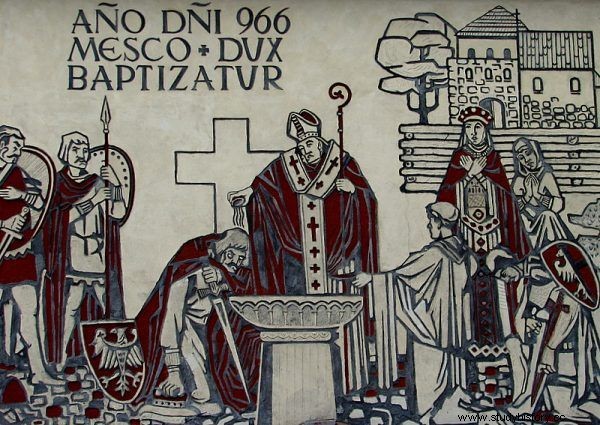
The adoption of baptism in 966 did not induce Mieszko I to stop trafficking in human beings, which brought measurable profits.
There are grounds to suppose that the Piasts built the state based on ... human trade . In the lands under their control, a large amount of silver Arabian coins were found, which could only come from the slave trade. It was the only Polish product that could interest Arab buyers. Its supply was ensured by the Piast conquests. It also seems that even the adoption of Christianity in 966 did not induce the Piasts to abandon their lucrative occupation. In 1030 alone, the Polans captured as many as 9,065 Christians in the area between the Elbe and Solawa rivers (read more about this).
